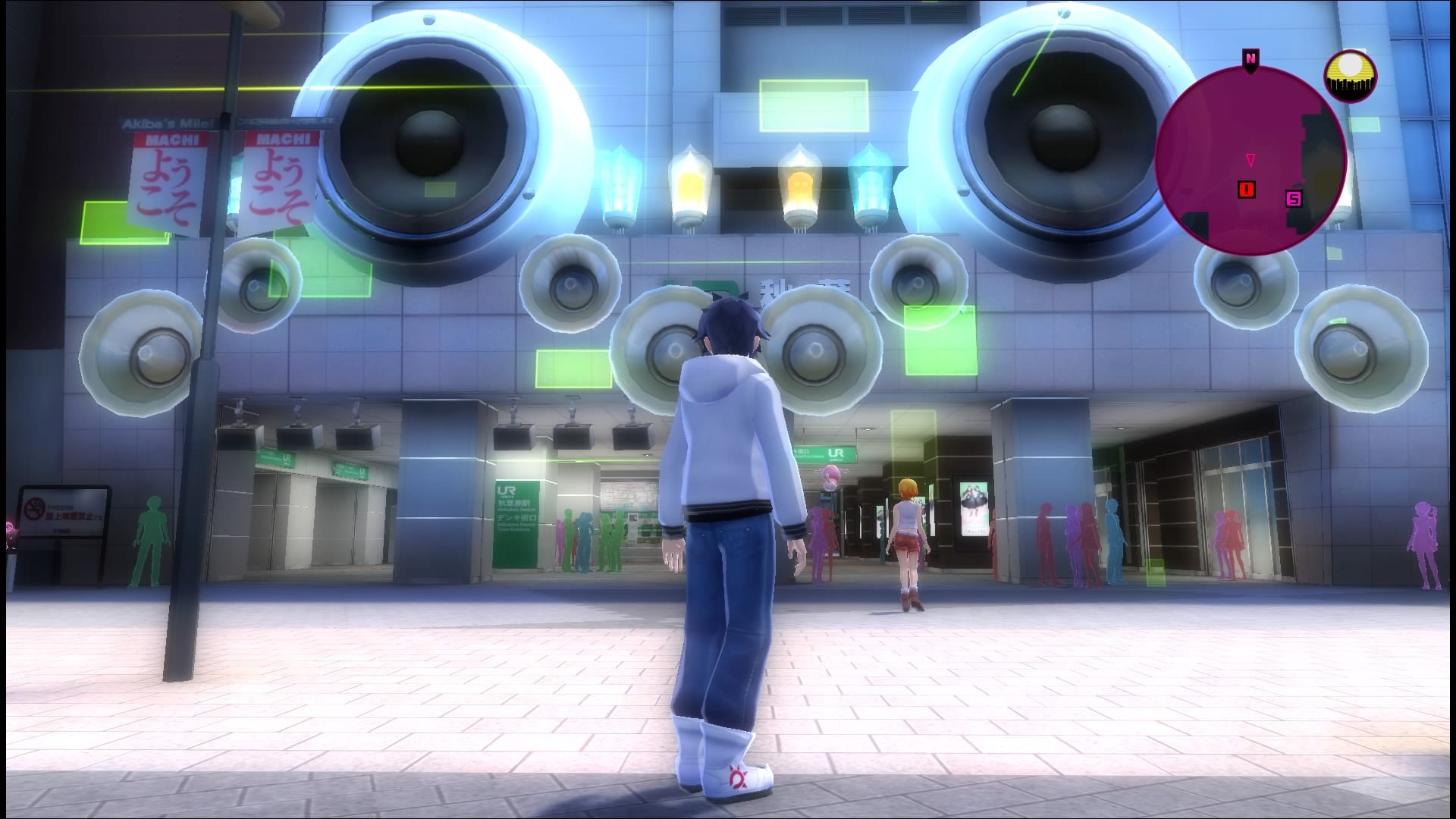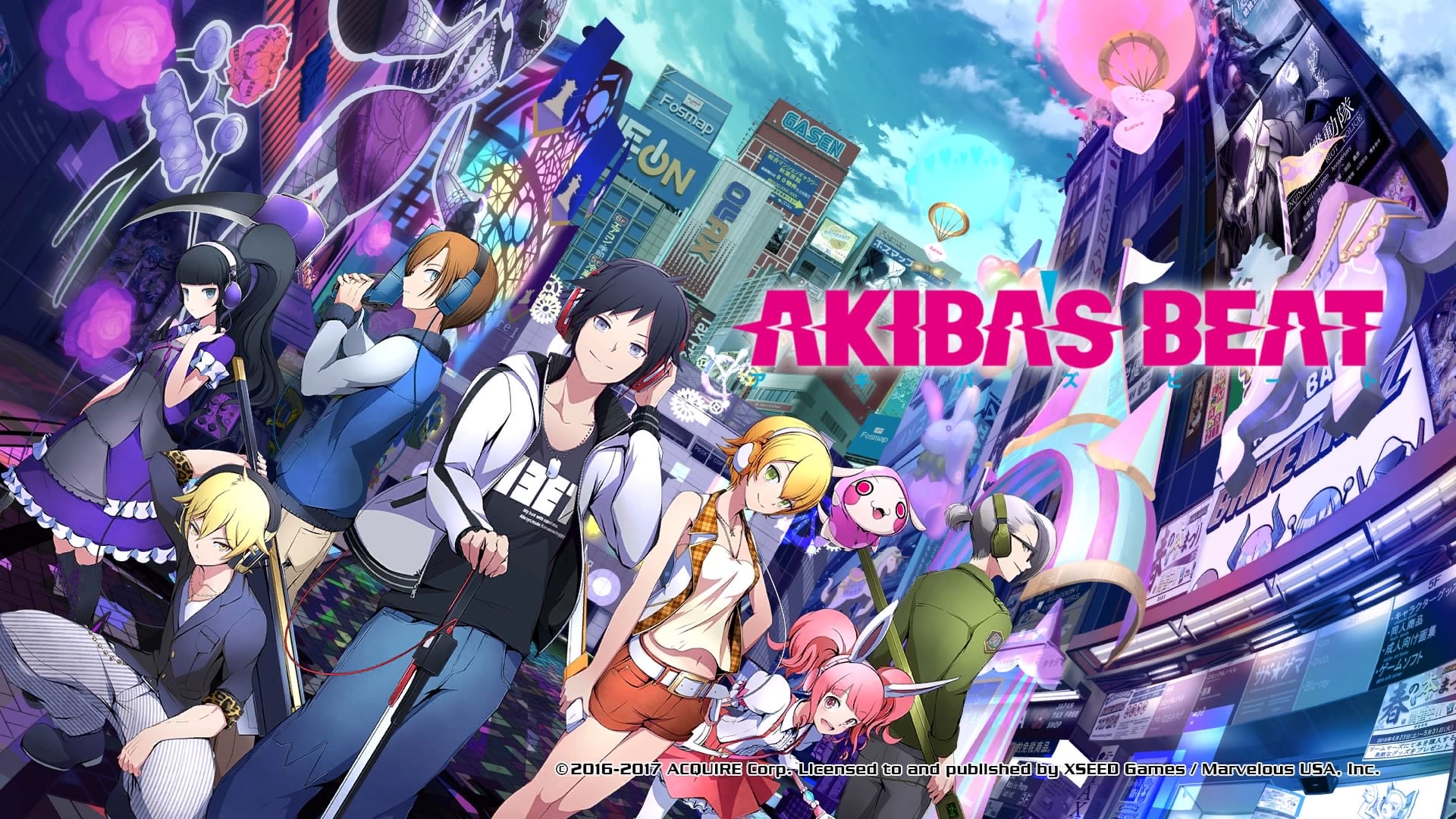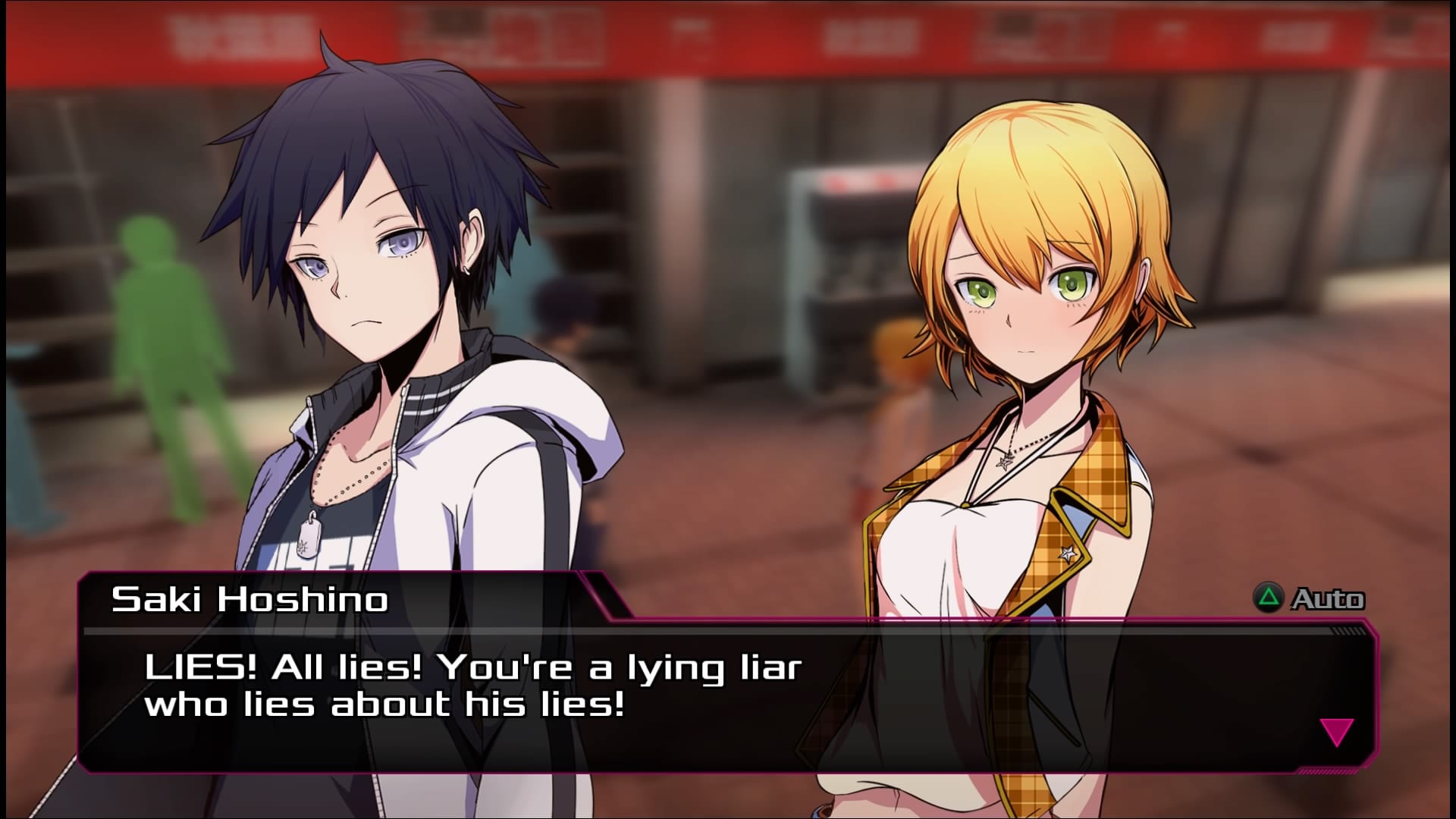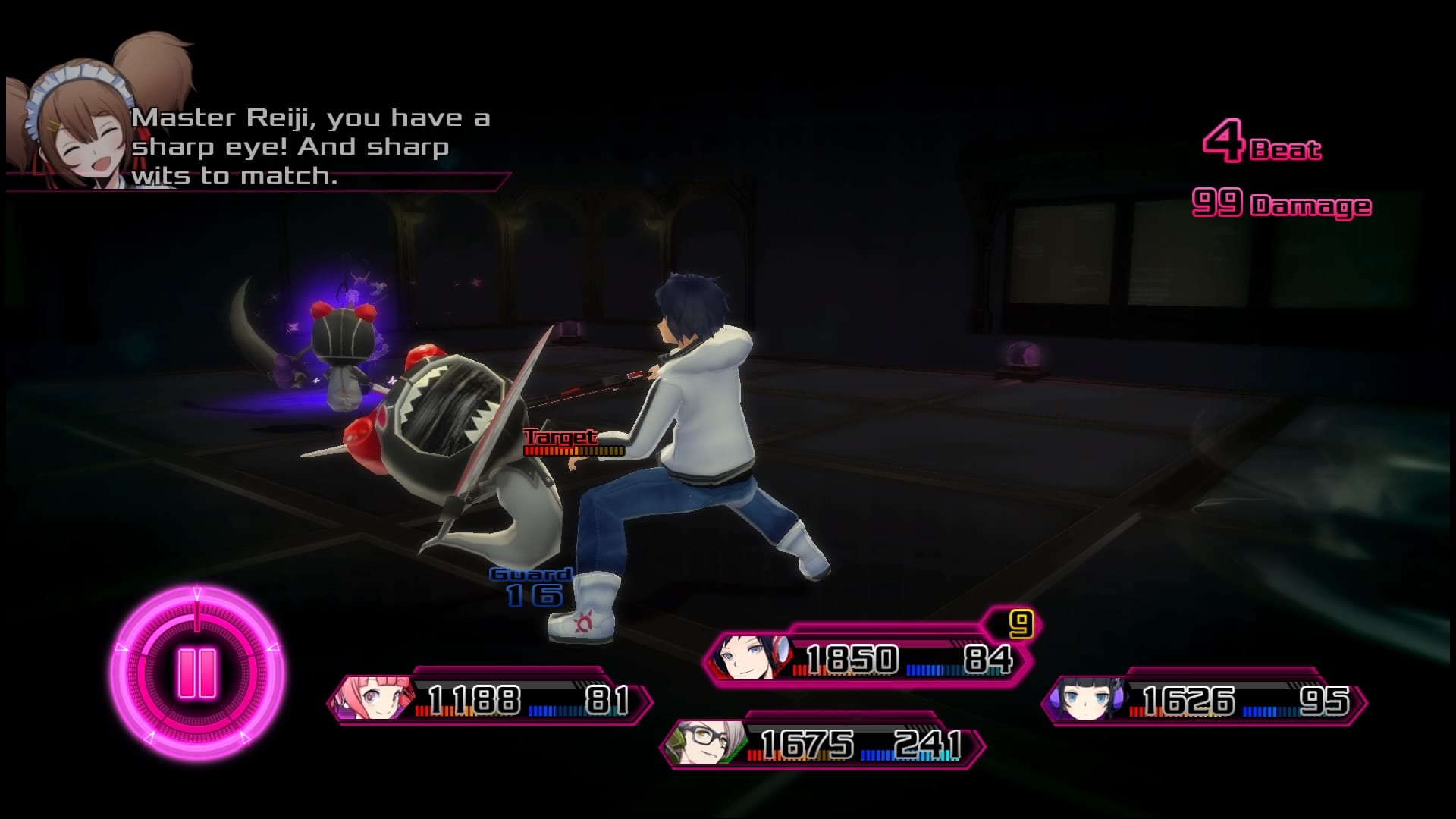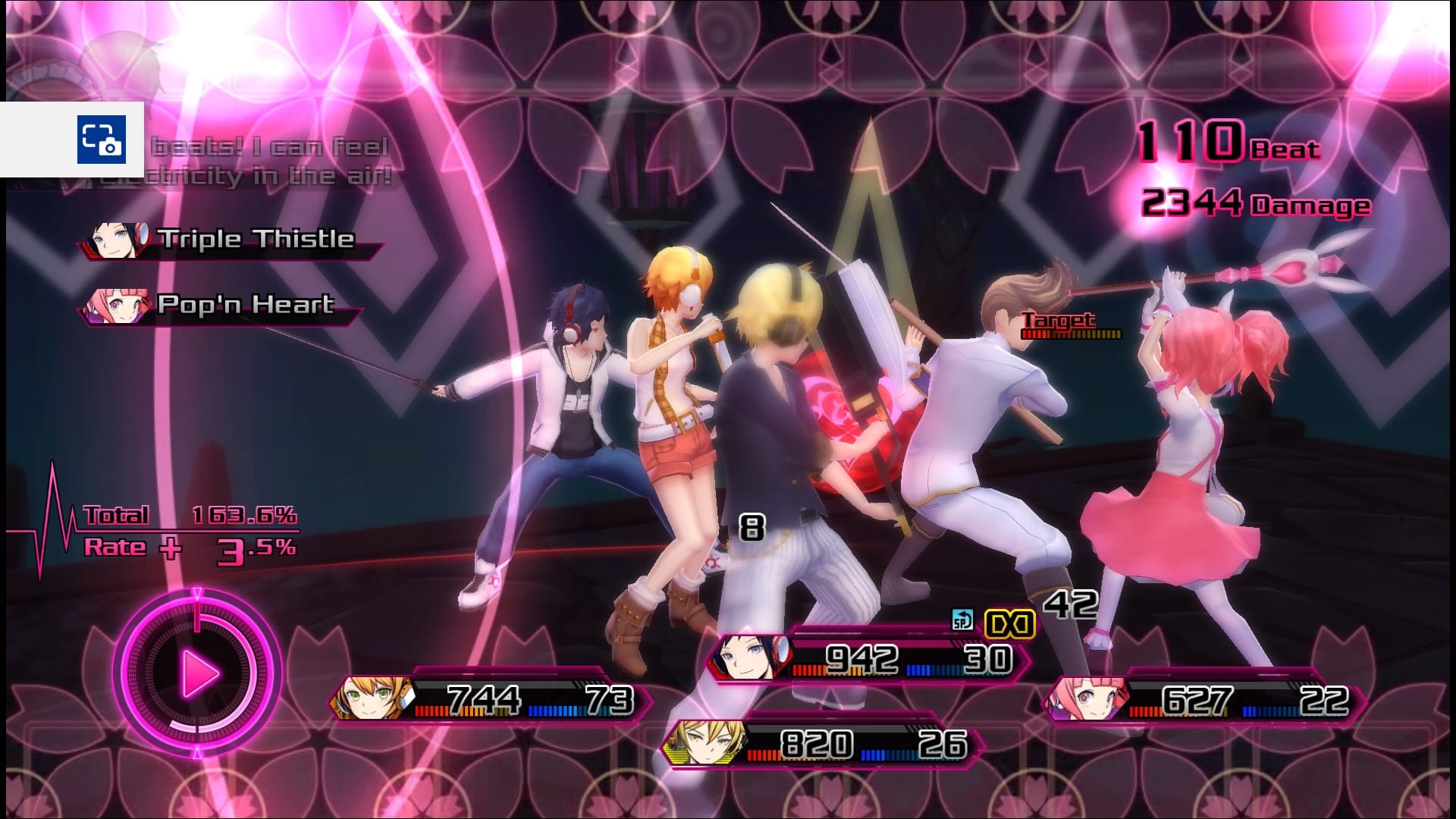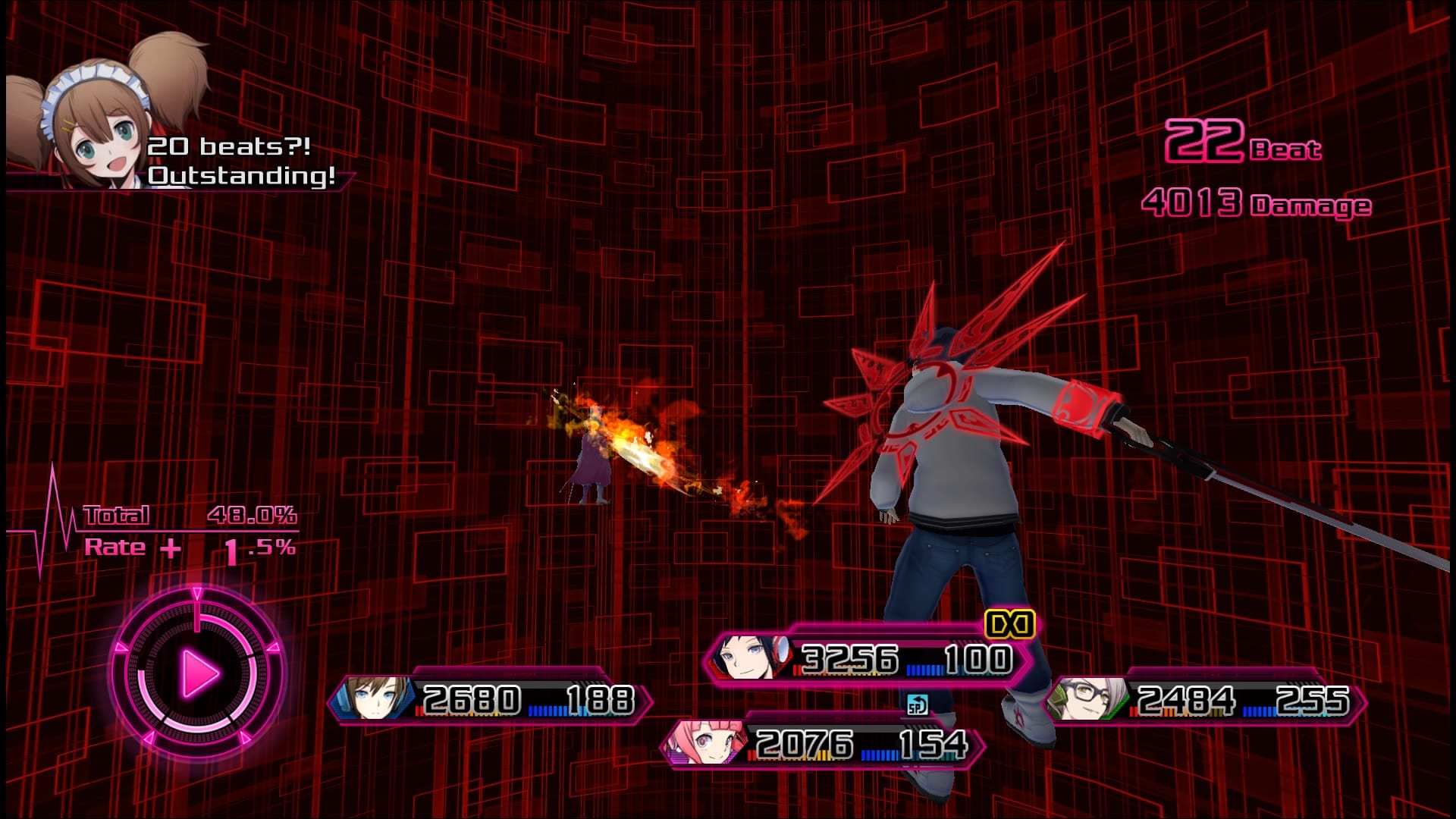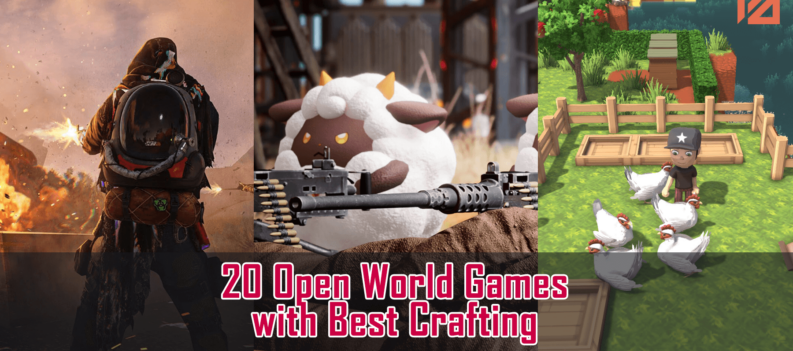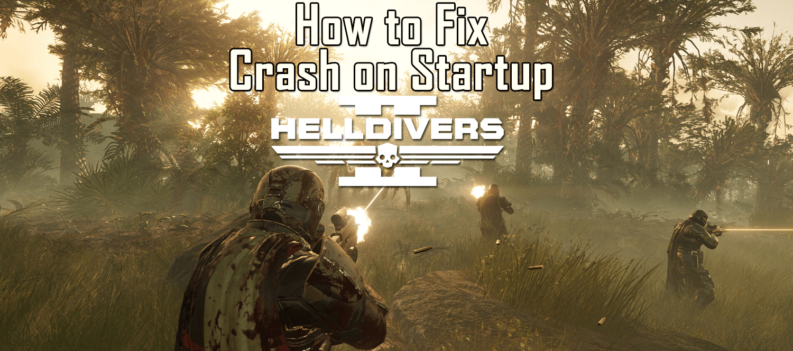Gather round dear readers, it’s review time. Today, we’re looking at Akiba’s Beat, the latest JRPG from developer Acquire and spiritual successor to Akiba’s Trip. There’s no robbing day-walking vampires of their clothes this time around though, in fact, the only thing the two games really share is the setting, Akihabara. This trendy Tokyo hotspot, a mecca for all forms of otaku culture, is your playground once again in Akiba’s Beat. Join our reviewer below to find out if it was worth the trip or if the game misses the beat
I’m a big fan of the JRPG in general, give me a story about a teenager with the power to save the world and a big ol’ sword to help him out and I’m pretty much satisfied. The thing is, JRPG really isn’t a very descriptive term – we could mean a turn based game, an action RPG, or something in between, we could be talking about a high fantasy setting, a sci-fi tale, or even a mix of modern tech and medieval combat a la Final Fantasy. Akiba’s Beat attempts to take many of the genre’s tropes and roll them into one setting, a world made of people’s delusions. It’s at once a satirical look at various aspects of gaming and otaku (nerd) culture and at the same time an example of them. The game has a unique attitude and style and, while it’s mechanically similar to countless JRPGs that have come before, its charming and humorous story and endearing characters helped carry me through the game’s more by-the-numbers moments.
Akiba’s Beat starts with the most unlikely of heroes, main character Asahi Tachibana is a NEET and proud of it. NEET is a term used in Japan to describe young adults Not in Education Employment or Training, basically he’s a guy who likes nothing more than to avoid the world, watch anime and play games (I can’t imagine why that sounds familiar). When people’s delusions start to take form and appear in his home town of Akihabara, he is reluctantly but unavoidably drawn into a quest to save the place from a Sunday that keeps on repeating.
In Akiba’s Beat, people’s desires manifest as ‘Delusionscapes’ – fantasy dungeons full of monsters known as Deluseons and guarded by a Grand Phantasm (or boss, in other words). Dragged along unwillingly by the self-proclaimed chosen one Saki Hoshino, our character sets out to nullify each delusion by defeating its Grand Phantasm in the hopes of ridding the town of its time loop problem. This starts out as a simple set up to the gameplay, which is split between investigating the real town and fighting through the delusions. The story takes many twists and turns over the course of the game, though, and the simple premise will later have you questioning what is reality and what is delusion.
I’ll leave story descriptions there to avoid spoiling anything but suffice it to say that the story of Akiba’s Beat is one of it’s strongest aspects. It may be told mostly through visual novel style animated conversations but there’s genuine humor in a lot of the dialogue and the plot itself kept me interested all the way through what is quite a lengthy adventure (not counting side quests you’re still looking at 50-60 hours). It’s definitely one that will hold more appeal for those familiar with various anime and rpg tropes as a lot of the humor derives from outright parody of, or subtle allusions to, the kind of characters and situations you often find therein. That doesn’t mean there’s no wider appeal though, Akiba’s Beat is also a strange kind of coming of age story and one that I think many people would find relatable.
The effectiveness of the storyline in the game is helped out by the characters you’ll meet along the way. Your various party members may fall (deliberately) into tropes; an aloof gothic lolita, a chirpy young girl with dreams of being an idol, a teenage manga writer obsessed with dark gods and cursed left body parts, and so on, but each of these characters has more to their personality than the surface suggests and each one gets a pleasing character arc that is brought out through their sub-plots. Each party member you meet has a series of side missions that slowly build a picture of their personality, which means they are definitely worth following if you’re interested in knowing more about the members of your team.
That’s not to say the gameplay in these sections is super exciting, you’re essentially running around from one conversation to the next to watch them unfold. This kind of gameplay also forms a large portion of the main story. The exchanges and interplay between characters was worth it, for me, but be aware that you’ll spend a lot of time in Akiba’s Beat wandering Akihabara and talking to people. It’s almost slice-of-life style gameplay without the relationship meters to think about.
It’s clear that the developer wants players to become intimately familiar with the town around them, always pointing out where you are and what’s around you during these vignettes. Like the real-world gameplay, though, it’s all very passive and while you’ll become familiar with the various landmarks around the town and be able to navigate the relatively small map in your sleep by the end of the game, your interaction with these landmark spots is minimal unless you’re cleansing them of delusions. While I wished I could do and see more in Akihabara, on the plus side there’s no meaningless collectibles out on the real world map and no throwaway quests that aren’t part of a larger story (save some monster killing contracts you can choose to take if you’re venturing back into completed delusionscapes).
The other half of Akiba’s Beat involves traversing the dungeons, or Delusionscapes if you prefer. Combat takes place in real time, with a pool of action points determining how many attacks or skills you can use before having to wait for them to refresh. You can reposition characters freely and dodge and block enemy attacks as well, to add another dimension to the fighting. It’s the kind of not-quite-real-time, not-quite-turn-based system that can end up being a bit of an unsatisfying mess and you’d hardly say that it’s free-flowing here. However, the depth of tactical options and the variety of skills that keep on developing to the end of the game save it from becoming a chore. In fact, while I started out a little deflated by the lacklustre system, by the end of the game I was much more invested as upgrades allow you to string attacks together more freely and more visually impressive skills come into play.
The unique hook for the combat in Akiba’s Beat is something called ‘Imagine Mode’ attack enemies to fill the ‘imagine meter’ and you can activate this mode and unleash hell upon your foes. Your character will change visually, their chosen song will start playing, and you can multiply your damage based on your combo and how far into the song you are. There are other advantages too and later in the game this will let you launch powerful ‘EX skills’ (though, oddly, it’s realistically possible to finish the game without ever getting to a level where you’ll have one of these). It’s quite a passive kind of hyper mode, it doesn’t make battles any more complicated but what it does do is provide a nice punctuation point to harder fights – letting you put on the inspiring tunes and really stick it to a boss.
As you would expect, you can outfit your characters to help them in combat with clothes, accessories, and most importantly, weapon parts. Your weapon, or PP, (yes, your weapon is called a pee pee, make of that what you will) is a kind of personal computer that forms a weapon when you enter a Delusionscape (or something, I didn’t really catch the explanation of that, if there was one). What this means practically is that each weapon is made up of various parts and you can upgrade each character’s unique weapon with added damage, higher imagine mode levels, capacity for more songs, and more. As you upgrade them, they’ll also grow and change visually, which is a nice touch given that each character will basically use the same weapon from start to finish. Add to this collectible trading cards to augment your stats and more and what I’m really saying is that the combat of Akiba’s Beat may take a while to get going but once it opens out it’s a deep and satisfying system with multiple moving parts to consider.
Music is a prominent theme in Akiba’s Beat, as you might have guessed from the name. There’s a wide variety of songs to be unlocked for imagine mode that span the pop and rock genres (or j-pop and j-rock if you want to be more specific) so you’re likely to find something you quite like kicking ass to. The tracks are fairly interchangeable in terms of their individual benefits too, so no worries about sticking with a song you like. Added to this there’s the general music in the game, which hits a nice blend of modern ambient tracks in the real world and more typical rpg style music in the Delusionscapes. It all feels very thematically appropriate and helps the overall immersion with little touches like changing the main map music when there’s an urgent task at hand.
Visually, the game is only okay. While there’s a lot of creativity in the design of each Delusionscape’s unique theme, (fairytales, anime, maids, idols, etc.) the graphical quality doesn’t quite carry the game’s visual ambition. Each dungeon’s landscape is formed from a flat set of tiles and each has a static background with a few unique moving parts. It gives off a weird kind of puppet show vibe and pervades each and every dungeon in the game, leading them to all feel uncannily similar. The mechanics don’t help the feeling of deja vu either as, apart from some simple switch based puzzles in the later dungeons, you won’t be doing anything other than fighting monsters and opening the occasional chest. Alright, it’s not exactly a cardinal sin in a JRPG but here it feels like a missed opportunity to make each delusion feel truly unique.
In fact, variety is probably the game’s biggest flaw. There are scant few enemy types and you’ll be fighting re-skinned versions of the same enemies for most of the game, even some of the bosses are repeated or have visually similar counterparts. The sheer length of the game’s story means that while there are a fair number of different Delusionscapes, you’re still forced to traverse the same ones multiple times in parts. This effect bleeds into the real world town as well, with NPCs that aren’t central to the story being mere faceless monochrome representations of people. This may have been an intentional move, seeing people unimportant to his life as faceless would be fairly appropriate for Asahi’s nature as a NEET, but it certainly doesn’t help the visual variety.
There are flaws with Akiba’s Beat but it’s worth a look for fans of story heavy JRPG’s, especially those who like a good anime romp. It’s a love letter to Akihabara, which will pass a lot of people by as it did for me, but it’s also a touching character story and self-aware enough that it’s story and humor elevate it above the genre tropes which it inevitably falls into itself. It’s not going to convince you to love JRPGs if you’re not a fan already but I’d recommend it to diehards of the genre for it’s knowing humor and the unique style that permeates the game. Certainly set aside some time if you do decide to pick it up though, as well as the lengthy story and sub-plots, there are other secrets to be found in Akihabara once you’ve cleared the game, as well as a new game plus mode. Seriously, if you really get into the game there’s easily over 100 hours of content for your hard-earned dollar-pounds. Whether you’ll want to dig that deep is another question.
Akiba's Beat PS4 Review
-
Overall - Very Good - 7.0/107/10
Summary
A competent, if not stellar, JRPG. Despite poking fun at many of the genre’s tropes it can’t quite help falling into them itself. Self-aware humor, a decent plot, and some endearing characters elevate the game above the mediocre affair it could otherwise have been though.
Review Disclaimer: This review was carried out using a digital copy of the game provided by the publisher. This does not affect the content of our review or the final score. For more information, please read our Review Policy.
*reviewed on a standard PS4


